Product Harmony
A heuristic for how to create great products, cultivate a great company, and generate revenue.
🌺 Let’s flourish 🌸
I’m a big fan of the arts, and an even bigger fan of whenever art merges with science. Einstein playing piano to find jolts of inspiration, Escher using math to play with perspective and make stairs look as if they’re going on forever, or create a fish that transforms into a duck 🐠♻️🦆.
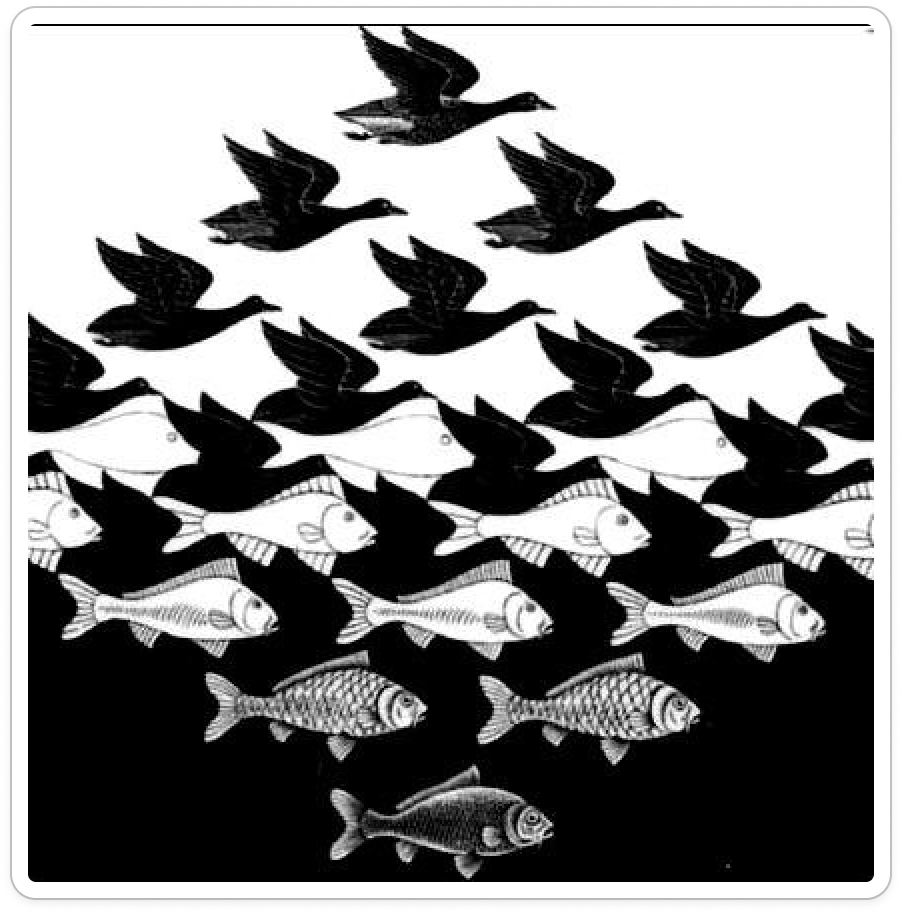
One of the things that irks me about the world we live in, is how we’ve all but thrown in the towel on any art in practice. We attempt to reduce everything down to formulas, known reductions and ways to reproduce something over and over again. A truth is that some things just aren’t reproducible. Often when a success in a product is attempted to be replicated, it's done so from copies instead of thoughtful application of a principal.
That last part is what I’m hoping to get to with this piece. Bring y'all along on an idea I've been crafting to create great products within a great company culture, and generate ( loads ) of revenue.
In the new age of AI generating images, unfortunately I think art being reduced to a straight process that can be copy and pasted will only get worse. As the ability to type in some prose and get a Van Gogh esk painting of the United Center becomes more and more common for any idea.

Here’s the thing though, honing a craft in something that isn’t a straight formula like changing a tire, is going to be come all the more needed in our world that’s rapidly changing. With repetitive tasks ever more getting successfully offloaded to the world of AI ( ahem read, automation 😝), being able to dance around ambiguity and craft something truly artful ( and impactful ) is going to be a requirement.
Steven Hawking said the 20th century was the age of information, and the 21st century is going to be the age of complexity. 👏 Preach Stevie, preach 🙌.
In my line of work, Product Development, folks use one word, Product, to amorphously sum up a cacophony of activities and skillsets that’s so overused it looses the point of what it is.
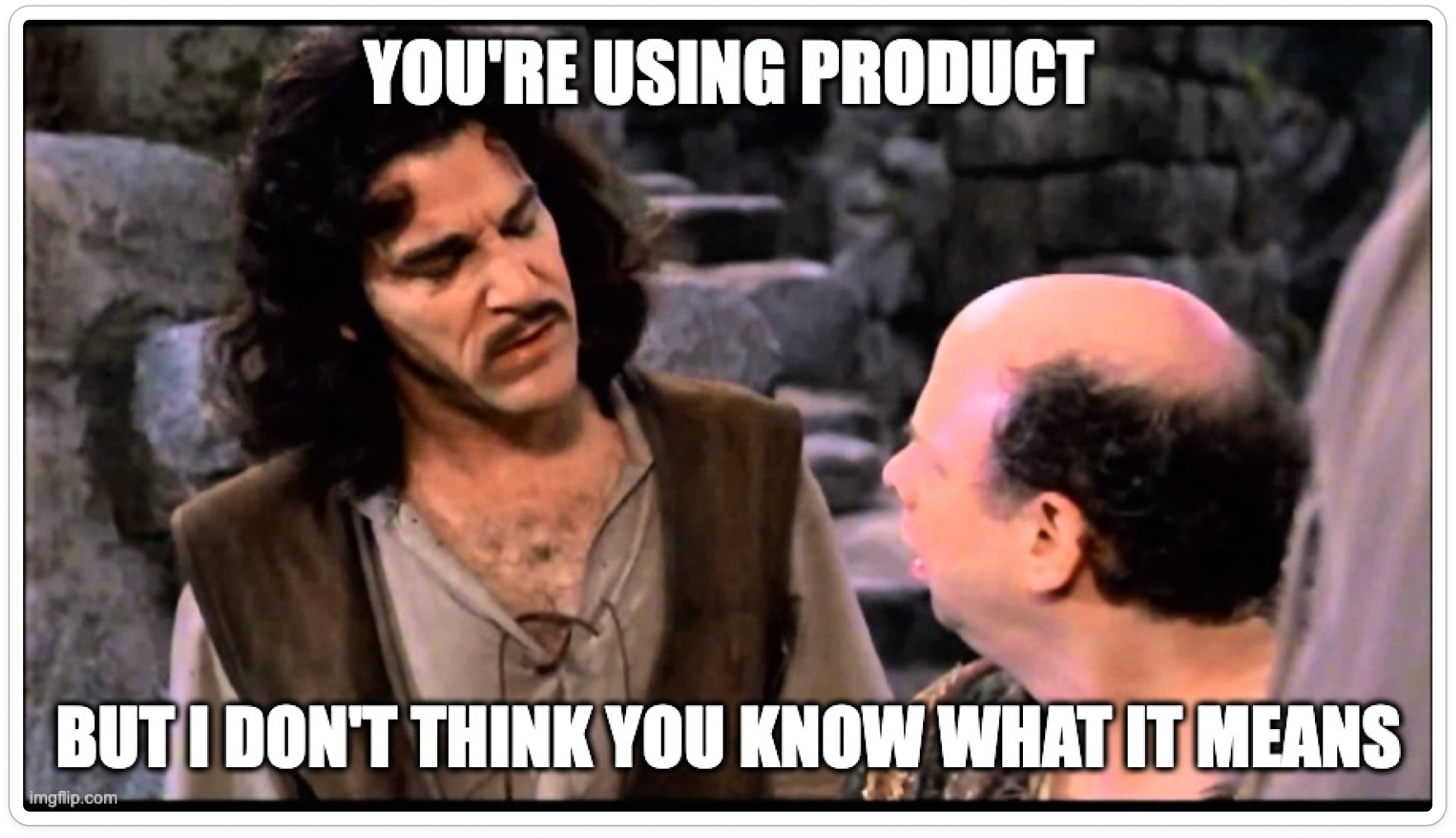
Let’s get concrete on a few things. A product, is the thing you interact with, it’s the thing of value 🏆. A hammer is a product to the company that produces it, but so is a concert you go to, or an app you use to log your meals.
How you build a product is a hot point of contention, as it seems like everyone and their agency seems to have a way “you just gotta” be using to build the thing. This is usually wrapped up some series of slides that when presented we ( or at least I ), do our best to respectfully pay attention to. These all attempt to exemplify the same idea, that executing work to build a successful product is a simple formula. When...it’s...not.
Some of the methodologies verge on a Janet Yellen impression with “data driven” decision making, with others lean so heavily into Agile, that the word “agile” becomes used to become what it was scorn to defend against. While others still default into the portion of the skillset they’re best at, be it the engineering / design / marketing etc.
Such is to say, we have an increasingly complex world we’re living in, that will only be changing faster with every entry of new technologies, competition heating up across the board and companies facing their own issues internally let alone externally. How then, can one effectively build a product that’s successful? And in such a way that it doesn’t end up as a one-off?
Here’s the hundred grand for my thought;
it’s better to focus on creating harmony in your product, than trying to execute a formula.
If you’ve ever heard Rory Sutherland’s Ted talk, or better yet read any of his books like Alchemy, you’re likely to spot the inspiration, just replace “harmony” with “magic”.
Creating a product that is truly great and successful, takes skill, earned luck, timing, talent, a team, but it also takes a certain undeniable 'x' factor that we shy away from saying out loud. That, is the harmony. Something that while elusive, can be crafted if you’re thoughtful in how you dance around the parts that make up a successful product. Those parts, are the notes for you to play the harmony.
The purpose of this series I’m building here, is to lay out how to use a heuristic I have to create great products. I’ll introduce the heuristic, then introduce a product that I think is great and break down why it is, by using that same heuristic.
A heuristic is a rule of thumb, a quick and easy guide for something, like using your thumb to judge the distance of an object on the horizon. Much like how using your thumb to guess a distance is very effective, it is still a general guide. While it’s not something that you’d take to get you to the moon, it is something you’d use to determine what step to take next.
Having a successful product is so much more than just having something built that works. From design through tech, then onto marketing and company culture, it’s difficult to know where a company’s efforts should be. Or, where they’re lacking.
So what I’ve come up with, is a way of organizing efforts into what I think are the broad concepts that help shift the aperture to bring the scene into focus, and set the stage for the rhythm to the harmony 🎶💃🕺🎶.
The idea here is to organize around three core tenants: Brand, Experience, Strategy. And let everything that you do, align into those buckets.
But what about the tech?! This is a digital product we’re building right?! Or organizational agility?! How can you compete with AI if you’re not able to move fast?? Or PRODUCT?!?! I thought you were a product guy!!
Well, everything from tech, to company functions and all that’s between, falls somewhere on the spectrum within the Brand, Experience or Strategy. It just depends on how they show up and how intentional it is. But everything a company does to build, maintain or nurture a product into reality can fall into one, or many, of those three.
It’s easier to think about these items as concepts that overlap, intertwine and hold the others up. Your design informs the tech, which becomes the experience people tap into, but also what you build and why you build it is the strategy, that can be informed by the culture at the company, while why those customers keep coming back to use it and what whey feel about doing that is your brand.
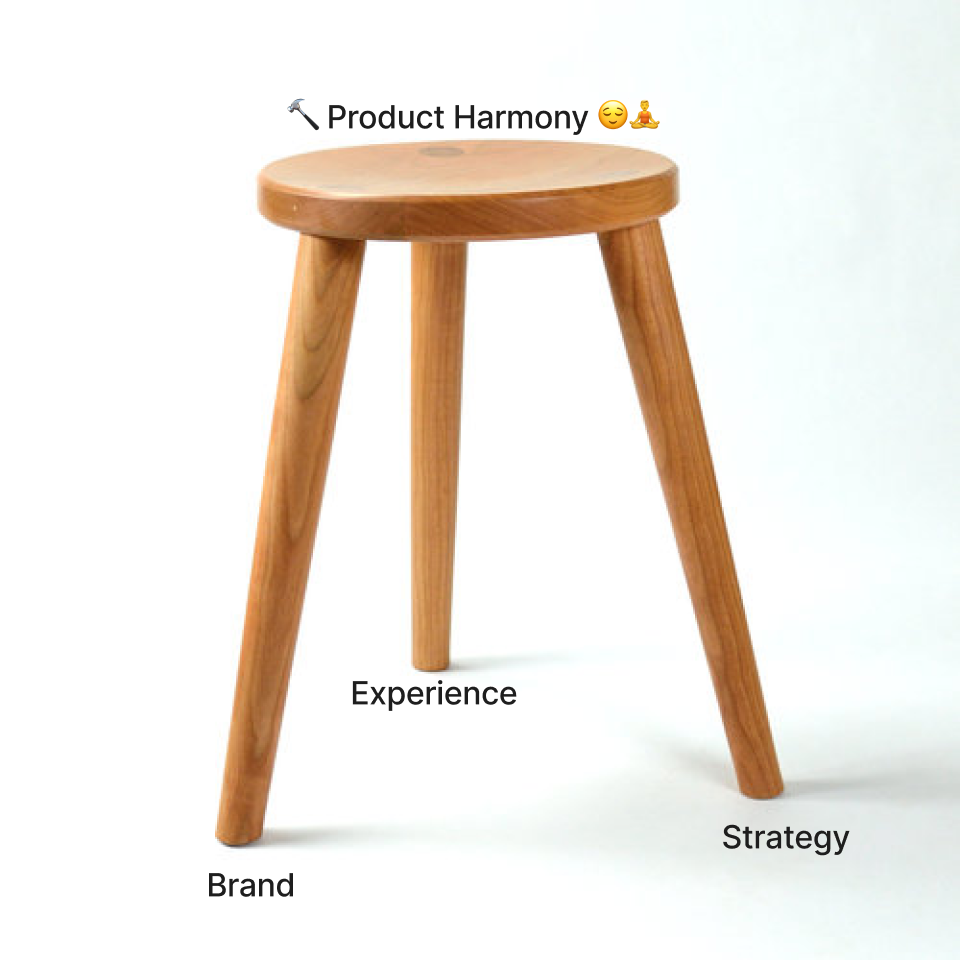
Product Harmony == Great product, Sustainable company & Revenue growth
The simplest version of a portable sitting device is a stool, and you need at least three legs to have a stool. You’ll need to do a lot of things to make a really successful product, but if you consider the three I’m proposing, you might just have enough to hold it up. If nothing else will have ideas for where to turn your attention.
These aren’t desecrate buckets or categories, but a field in the sense that gravity is a field, or a forest is a field of many things that make that one label of “forest”. Each of the three isn’t only a single thing, there’s a lot that make them up, and not to mention it’s all a part of an ecosystem ( the product being built by a company, within an adressable market ).
Consider it no different than how your gut biome is both influencing your brain, your energy, your health and your mood. Think of this, we can’t actually digest the food we eat, well that is, we can’t until the initial heavy lifting is done by innumerable tiny little bugs which evolution gave us to break food down so we can digest it. And those tiny little buggers can get hooked on sugary treats, sending our brain signals that cause use to feel cravings for more thin mints, without us even realizing that we’re suddenly a sleeve down because of tiny creatures in our stomachs. These tiny bugs effect the way we even see the world.
Well then, is your microbiome a single thing then, apart from you? Or is that just a part of the whole that is you? Yes, and well, yes. Categorizing a microbiome as a single thing is helpful, but they’re also a part of my daily walking around consciousness-- something we’ll become acutely aware of if we decide to break that habit of a mid-afternoon sugar rush.
With that concept in mind, each of ideas within Brand | Experience | Strategy, is both it’s own thing, and can also be an integral part to something in another. How everything plays into another to make up a product, is what I’ve found makes this such an effective heuristic, and how you create the "harmony".
If you like Alan Watts or Eastern philosophy writ large, you might see where I’ve drawn inspiration from, outside of biomimicry and throughly breaking down everything I both love and hate to understand why do I feel this way. ( Which has lead to multiple rants to my wife, instructions in hand, for why something has poor design as my reason to return it 🤭 )
Giving a concrete example:
the way a customer service chat responds back, the slight color difference in the type and animation that flashes across the screen as they respond, can be both the product’s brand, and experience. Depending on if they’re later planning to sell this feature as another product altogether, or if having the best customer service is something they want to be known for, it may even hit the grand slam and also be a deliberate strategy choice as well.
The ecosystem of Brand | Experience | Strategy is what all the people in the company are a part of, and where in the market the product sits is the geography and location to that ecosystem.
The definitions & breakdown
To better understand what I mean with each of these, it would help to define what each of them are. Soooo......
Brand == the story & emotional connection to the product people have, and the choices made to create, cultivate and nurture it. Some examples are the colors, fonts, tone of voice, how things are presented to you and all those subtle details that they didn’t have to do, but really did.
What this is in practice: Why I just can’t stop talking about [ insert product or company here ] ( for good or ill ).
Example of a great brand, and one you may have never heard of, porkbun.

They make buying + managing a domain cheeky and fun, when they really don’t have to. This is a straightforward and commodified market. They’re also the cheapest in town. So ya know, with that price point, you’re willing to give them some lead like how their interface isn’t as polished whatsoever. But they provide you what you come for, are always helpful and those pigs are just so much fun.
Example of a terrible brand, Comcast ( in Chicago they’re delightfully referred to as Con-cast ). Comcast is a terrible experience in just about every way. With every attempt they make to rebrand aspects of what they do under another brand name like Xfinity, all of their applications still end up having terrible UX and just frustrate all who touch them. Sure, they have many well polished apps, the colors are great and have that in vogue aesthetic, but the connection I have to them is still the pain they bring me, it just now has some drop shadows. To edify this, a personal anecdote; I once realized the only way I could get my internet working again, and get refunded for the two weeks it didn’t work, was to blast them on Twitter.

Experience == the direct interaction with the product.
What is this in practice: *the clicking, interface layout, features, etc. The rubber meets the road with the product. *
Example of a very good experience, Tinder ( there’s a link to a whole blog on it, so it’s not just me 😝 ). And I know 🙄... but hear me out. You open up Tinder and you right away get what you’re supposed to do. See someone, read a quick blurb and then swipe yes or naw. I mean just think about it, they own swipe right.

Example of a terrible experience, Salesforce. There’s a lot of great things Salesforce can do, I know about many of them from working there for so many years. But I also know the interface is overwhelming, relies completely on muscle memory to pull those great things out from it with many rules for how you can do it. It can also be slow, and because there’s so much you can do with it, that also means there’s so much you can mess up with it.
A great experience shouldn’t need to be taught, it should be intuited. Again, think of Tinder.

Strategy == the business decisions and plan to capture, grow, and retain, customers & revenue.
Planning to start out in a specific niche, leveraging that to move into other verticals, even down to how you plan to allocate your funding, or what choices you make in building out infrastructure are all parts of it. But it also extends to how you staff, how you cultivate talent, and a whole mess of other aspects that like it or not, play into your ability to actually execute.
Strategy is being able to bend time and hold in your hand the now and the later.
What is this in practice: This is what’s used to know where and what to invest in ( from design time through infrastructure and growth ), along with when and how to position it inside and outside of the company.
Great example of strategy, Mistral. Mistral came out with nothing more than a Google Doc and an impressive founding team, that outlined their plan to build a set of AI models to out-compete OpenAI, and doing it open source to boot. Some people were impressed with their team, others laughed and said good luck. But over a year in, they’ve proven they can do it and their roadmap looks ever more exciting. ( they also have impeccable branding 👌)
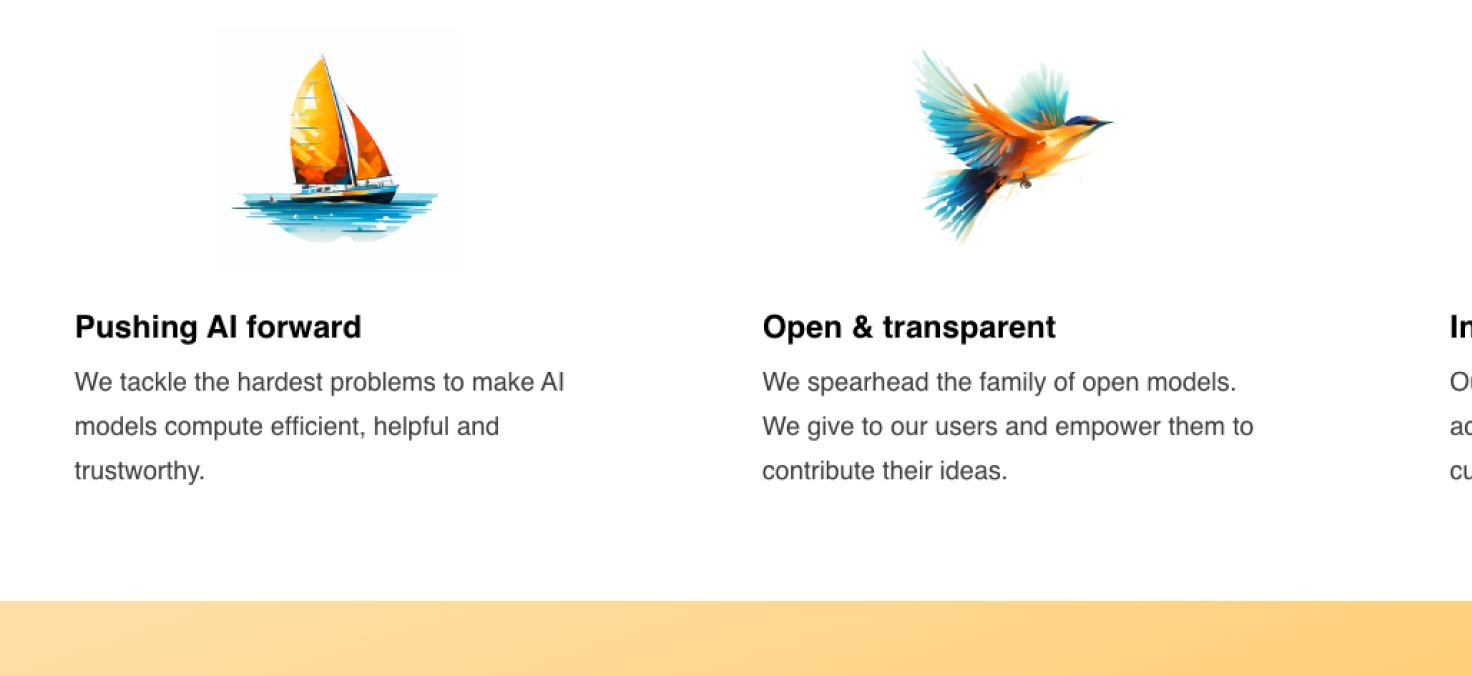
Example of terrible strategy, Blockbuster. I love this example for so many reasons, namely that the competitor that took them out adapted with technology improving to not only take out their core business, but change the landscape completely. Blockbuster had the option to buy Netflix for $50 Million but supposedly laughed it off, only for the dinky little mail in option to take them out of business a few years later. We can lament the loss in being able to browse a video store ( know that I can at length ), but they’re a great example of not being able to look ahead, and focusing too much on what they had now.
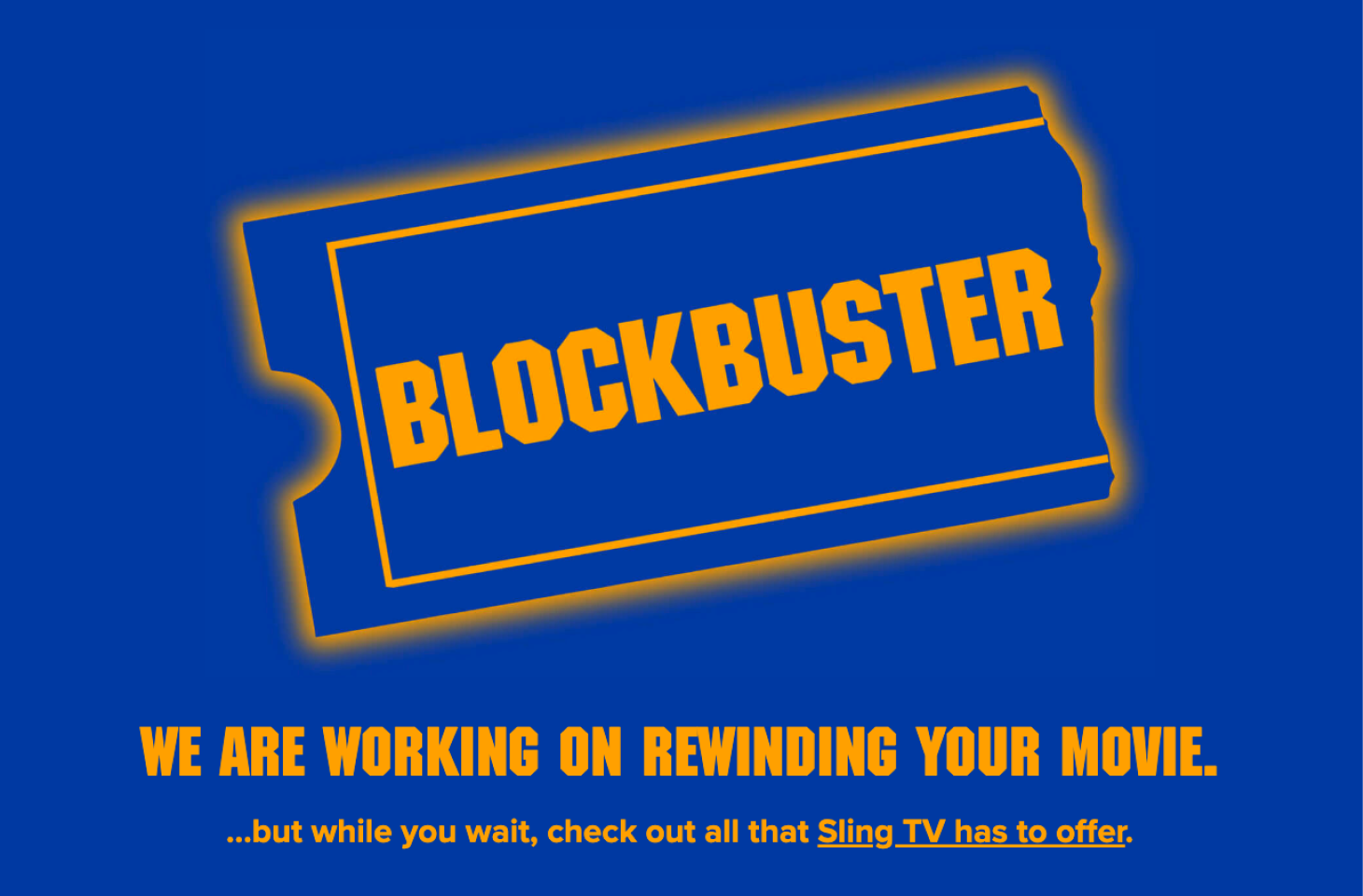
The best ways of learning is by doing. But I won’t be able to run an unknown ambiguous audience on the internet through a workshop on how to bring these trifecta of ideas into practice.
So instead, I’ll use the rest of this series to use these three areas of Brand | Experience | Strategy, to break down a product out in the wild that I think is truly harmonious.
That product is Arc, by The Browser Company.